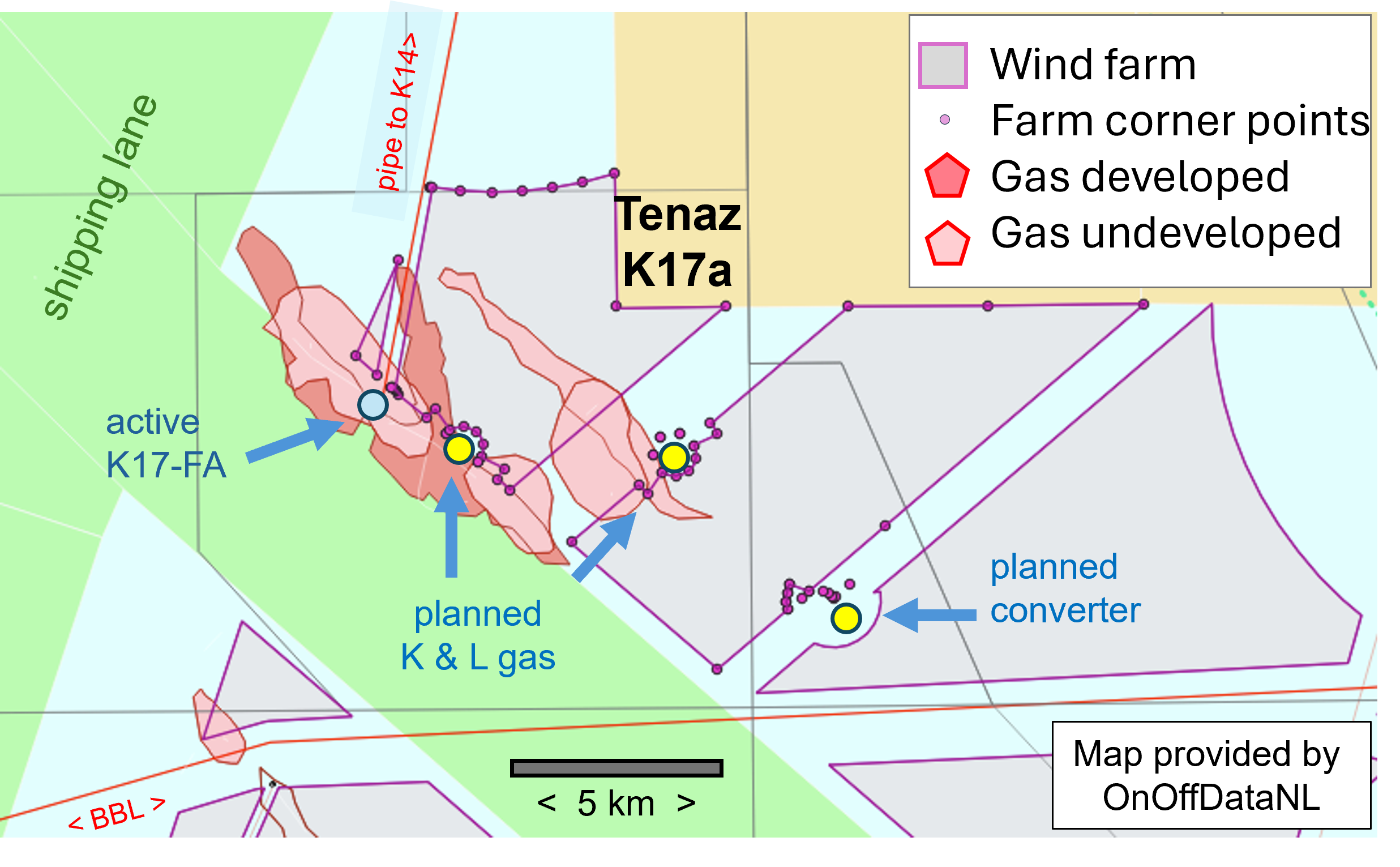It is getting busy in the North Sea. Was the area a monopoly for oil and gas companies when it comes to energy production for decades, in recent years offshore wind farms have laid an increasingly large claim on large swaths of its waters.
However, this does not mean that both gas and wind production can not go hand in hand, provided there is room for some adjustments here and there. “Polderen”, as it is called in Dutch. Canadian newcomer Tenaz Energy has quickly cottoned on to this Dutch tradition.
Tenaz acquired most of NAM’s offshore gas assets earlier this year and has contracted a drilling rig for an aggressive campaign to produce whatever is left. By doing so, the company is not just drilling infill wells, it is also looking at developing new gas accumulations. It is the latter that has now caused the boundaries of a future wind development to shift in a couple of places.

In a document released by the Dutch authorities, it is shown how the boundaries of the so-called “IJmuiden Ver Gamma B” wind development have made room for two potential future planned platforms (indicated by the label “planned K and L gas” in the map above). To compensate for this loss of wind acreage, the concession has been expanded in the west.
According to Bert Manders from OnOffDataNL, who has been following the Dutch E&P sector since its early days, with the two new platforms Tenaz is probably intending to produce gas from two undeveloped Zechstein gas discoveries. Step-out drilling from the already existing K17-FA platform is possibly too risky for that. In addition, there are also reports that Tenaz might develop a stranded Rotliegend field in the same area.
All in all, this pragmatic approach is a good example of how the government strives to balance between accommodating new energy whilst acknowledging that gas domestic gas production is still very much needed in the years to come.

